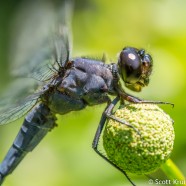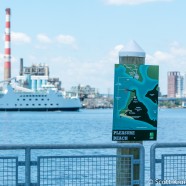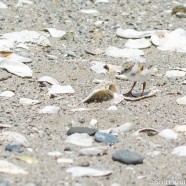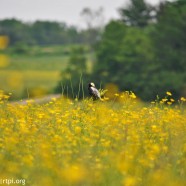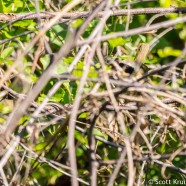Slaty Skimmer
This is an up close and personal look at the ruggedness of a male Slaty Skimmer (Libellula incesta) dragonfly, scratched and scarred from a tough life on the wing and seen here while resting on vegetation along a pond. That thorax looks rough and beaten on this mighty hunter, but after this was taken it was soon patrolling for females and fending off foes in the fight for life at the water. Don’t you always wonder what those enormous eyes have seen…while they undoubtedly keep a close watch on you? Just another hot July afternoon… Scott Kruitbosch Conservation & Outreach...
Read MorePleasure Beach Training
The Roger Tory Peterson Institute of Natural History and Audubon Connecticut teamed up to instruct and ready our new WildLife Guards Crew Leaders, Alivia Sheffield and Emily Allen, from June 22 through June 26 in preparation for our WildLife Guards (WLG) program, which trains, mentors, and employs ten local high schools students. This is RTPI’s first year participating in the very successful education and outreach program. Teaching the teachers is a very important task, especially when they and their students will be reaching tens of thousands of people this summer! The students and...
Read MorePiping Plover Hatchlings & WildLife Guards
A Piping Plover pair at Bridgeport, Connecticut’s Pleasure Beach became new parents to four tiny hatchlings either very late on the night of Thursday, June 18 or early in the morning of Friday, June 19. Our work in the Audubon Alliance for Coastal Waterbirds makes them our responsibility. These birds are the City’s one pair for the 2015 season, and with Pleasure Beach being open to the public for a second year after being off limits for nearly 20 years and overrun with predators. I visited them with Audubon Connecticut’s Important Bird Area Program Coordinator Corrie...
Read MoreButtercups and Bobolinks
Fields painted yellow, birds singing and the sun shining, what else could we ask for? Throughout Chautauqua County the fields are becoming seas of gold as the buttercups bloom. These common flowers don’t just make a large grassy field pretty, but also provide habitat and cover for a number of breeding grassland birds. For Bobolinks in particular, these fields provide a great deal of food, abundant nesting materials and a safe haven to raise their young. As we have been conducting vegetation surveys at the Chautauqua County-Jamestown Airport, we have been surrounded by these incredible...
Read MoreCommon Yellowthroat
You can see me, but I can still see you, Common Yellowthroat (Geothlypis trichas) male. Keep working on that hiding game…especially in nesting season! Scott Kruitbosch Conservation & Outreach Coordinator
Read More



